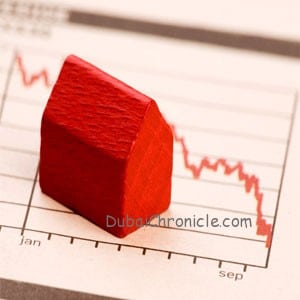
Freshly released forensic analysis of property listings data shows broad-based declines in the six months to March 2017, although trends vary significantly by neighbourhood.
Sustained price slump appears to be tempting back potential buyers and tenants, with pageviews on propertyfinder.ae up 40% year-on-year
Propertyfinder Group’s UAE Real Estate Trends 2017 report reveals further weakening in prices across Dubai’s freehold neighbourhoods, extended gloom in Abu Dhabi and worsening yields for buy-to-let investors as declines in rental values outpace those in the sales market.
Yet amid the grim numbers, there are signs of recovery, with brokers reporting a bullish first quarter of 2017 and the portal achieving a 40% rise in page views to 14 million in March versus a year earlier.
Propertyfinder’s Chief Commercial Officer Lukman Hajje says: ‘’The report confirms what most have suspected; prices continue to ease, both in sales and rentals across most communities in the UAE. There are a number of elements at play; high levels of construction in the lead up to 2020 increasing supply and competition for buyers and renters; a new reality of oil prices at $50 per barrel; a historically strong dollar making UAE property comparatively more expensive despite the declines, and a historically low GBP and Euro encouraging British and European owners to liquidate their UAE property holdings to realise currency profits.’’
As Middle East and North Africa’s well established real estate portal, Propertyfinder’s search data provides an unparalleled and up-to-the-minute snapshot of the UAE’s real estate sector, accounting for 62% of all UAE visits to property portals.
Covering the six-month period from September 2016 to March 2017 inclusive, Propertyfinder analysed the apartment market in 23 Dubai neighbourhoods; sales prices fell in 17 districts and rental values in 21.
For sales, Downtown Dubai remained the most expensive area in which to buy at 2,182 dirhams per square foot, despite a 6.7% price decline, the largest drop in the apartment sector.
Price changes seem to have little connection to overall prices, with some of Dubai’s cheaper areas such as Dubailand (-3.5%) and IMPZ (-3.6%) also suffering some of the biggest falls.
Likewise, the six districts that bucked the negative trend appear to have little in common and include Sports City (+1.6%), Jumeirah Village Circle (JVC) (+4.1%), Greens (+0.1%) and Al Furjan (+0.7%).
“In the case of Al Furjan and JVC, completed, affordable, ready-to-move-in apartments were handed over,” states the report, which is available for free download at propertyfinder.ae and covers the villa and apartment sectors in Dubai, Abu Dhabi and the Northern Emirates.
“This is still an undersupplied segment in the Dubai market.”
Dubai apartment rental values fell by a greater margin than sales prices in most areas. This suggests landlords have proved more willing to cut their asking prices than those wishing to sell, and points to ebbing demand and over-supply.
These trends, led rental yields for buy-to-let investors to fall in most neighbourhoods, although they remain attractive by international standards, ranging from 5.2% on Palm Jumeirah to 9.5% in Discovery Gardens for apartments and 3.1% in Emirates Hills to 6.5% in JVC for villas.
In Abu Dhabi, villa sales prices fell in six of eight districts, including an 11.8% plunge in Al Raha Gardens, while villa rentals along with apartment sales and rentals were also predominantly in retreat.
“Rents continue to decline in Abu Dhabi where a reduction in government spending in direct correlation to sluggish oil prices has reduced employment and demand for housing in the capital,” the report adds.




































